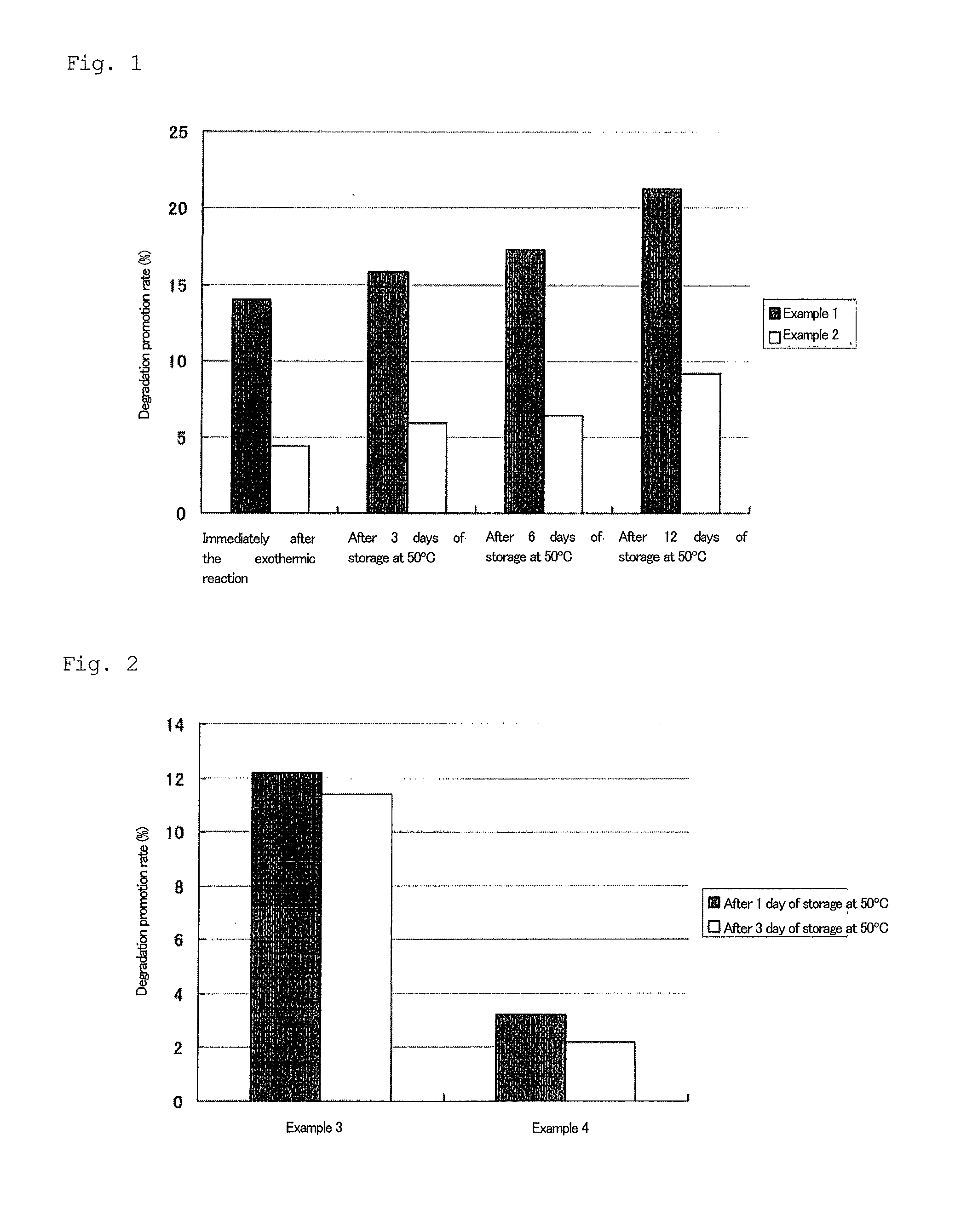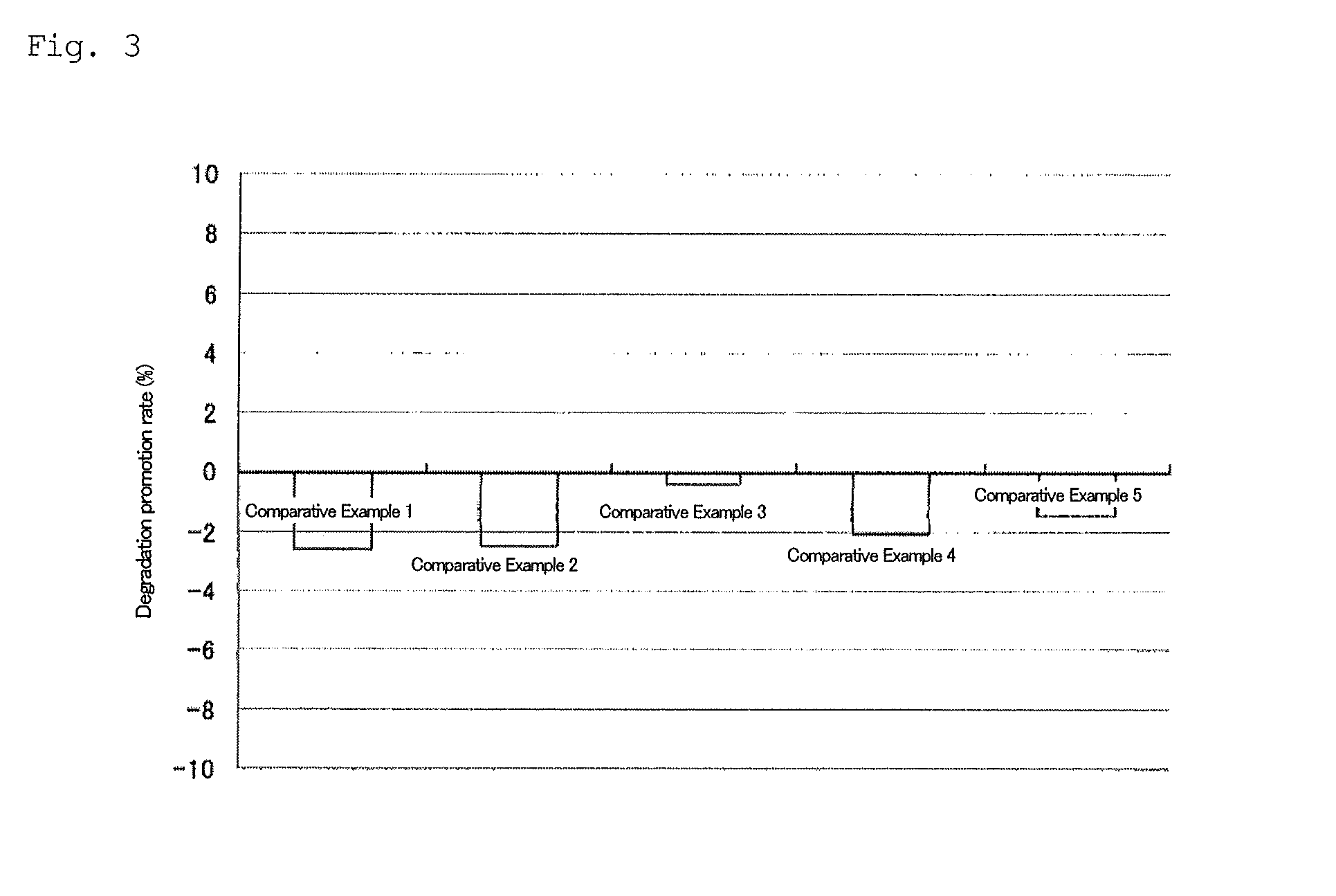Degradation promoter of biodegradable resin molded body, and use thereof
a biodegradable resin and promoter technology, applied in dyeing process, halogen oxide/oxyacid, other chemical processes, etc., can solve the problems of incineration disposal of resin molded bodies, poisonous gas generation, adverse environmental effects, etc., and achieve rapid spontaneous degradation and accelerate biodegradation
- Summary
- Abstract
- Description
- Claims
- Application Information
AI Technical Summary
Benefits of technology
Problems solved by technology
Method used
Image
Examples
example 1
Preparation of Biodegradable Product (Disposable Body Warmer)
1. Preparation of Functional Composition (Exothermic Composition)
[0070]1 mass % of potassium chloride, 55 mass % of iron powder having an average particle diameter of 50 μm, 13 mass % of activated carbon having an average particle diameter of 200 μm, 26 mass % of water, 3 mass % of vermiculite having a particle diameter of 100 μm, and 2 mass % of a crosslinked partial sodium salt of an acrylic acid polymer having a particle diameter of 380 μm were mixed to prepare an exothermic composition.
2. Preparation of Resin Molded Body (Inner Bag Material of Disposable Body Warmer)
[0071]A resin sheet consisting of 98 mass % of polyethylene and 2 mass % of an oxidative degradation agent-containing material was brought into contact with a rotating roll comprising a row of disc-shaped members, each disc-shaped member having blades on the circumference, to prepare a breathable resin film (thickness: 40 μm) having fine pores with a size t...
example 2
Preparation of Biodegradable Product (Disposable Body Warmer)
[0074]A disposable body warmer was produced under the same conditions as in Example 1, except that 1 mass % of sodium chloride was used in place of 1 mass % of potassium chloride.
examples 3 and 4
Biodegradable Products (Non-Exothermic Composition-Containing Products)
[0078]2.2 mass % of potassium chloride, 28.9 mass % of activated carbon having an average particle diameter of 200 μm, 57.8 mass % of water, 6.7 mass % of vermiculite having a particle diameter of 100 μm, and 4.4 mass % of a crosslinked partial sodium salt of an acrylic acid polymer having a particle diameter of 380 μm were mixed to prepare a non-exothermic composition (functional composition). Twenty grams of the obtained non-exothermic composition was enclosed in the same inner bag (biodegradable resin molded body) as that used in Example 1 to prepare a non-exothermic composition-containing product (Example 3).
[0079]Another non-exothermic composition-containing product (Example 4) was prepared under the same conditions as in Example 3, except that 2.2 mass % of sodium chloride was used in place of 2.2 mass % of potassium chloride.
PUM
| Property | Measurement | Unit |
|---|---|---|
| particle diameter | aaaaa | aaaaa |
| particle diameter | aaaaa | aaaaa |
| particle diameter | aaaaa | aaaaa |
Abstract
Description
Claims
Application Information
 Login to View More
Login to View More - R&D
- Intellectual Property
- Life Sciences
- Materials
- Tech Scout
- Unparalleled Data Quality
- Higher Quality Content
- 60% Fewer Hallucinations
Browse by: Latest US Patents, China's latest patents, Technical Efficacy Thesaurus, Application Domain, Technology Topic, Popular Technical Reports.
© 2025 PatSnap. All rights reserved.Legal|Privacy policy|Modern Slavery Act Transparency Statement|Sitemap|About US| Contact US: help@patsnap.com


